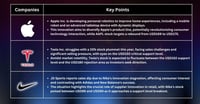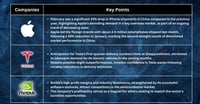If the Federal Reserve’s view on inflation prevails, a few key things must change, particularly when it comes to getting people back to work. Having said that, the Fed is unlikely to discuss about tightening this week, which may send dollar lower again.
Solving the jobs puzzle has been the most vexing task for policymakers in the coronavirus pandemic era. There are nearly 10 million potential workers still considered unemployed, even though the number of open positions available hit a record of 9.3 million in April, according to the latest data from the US Labour Department.
There is a simple inflation dynamic at play: The longer it takes for people to go back to work, the more employers will have to pay. Those higher salaries will trigger higher prices, leading to the kinds of longer-term inflationary above-normal pressures that the Fed is trying to avoid.
Market players can see good reasons that labour participation might not return quickly to its pre-Covid level. Whatever is happening here, the Fed needs large numbers of these people to return to the labour force in the fall. The pace of inflation is of critical importance to economic trajectory. High inflation could force the Fed to tighten monetary policy faster than it wants, causing cascading impacts to an economy dependent on debt, and thus, resulting in low interest rates.
Consumer prices increased at a 5% pace year over year in May, the fastest since the financial crisis. Investors still generally agree that much of what is driving the rapid inflation surge is due to temporary factors that will ease up as the recovery continues, and the economy returns to normal, following the unprecedented pandemic shock.
The Atlanta Fed’s gauge of “sticky” inflation, or the price of goods that tend not to fluctuate greatly over time, rose 2.7% year over year in May - the strongest growth since April 2009. A separate measure of “flexible” CPI, or prices that tend to move frequently, increased a stunning 12.4%, the fastest since December 1980.
In their most recent forecast, Fed officials put core inflation at 2.2% for all of 2021, but the current numbers suggest something closer to 3.5%. That is a huge miss, and this could potentially pose a serious threat to the Fed’s benign view of medium-term inflation because of its potential impact of the labour market.
Surveys show a variety of factors keeping workers from taking jobs - ongoing pandemic concerns, child-care issues, particularly for women, and enhanced unemployment benefits that are being withdrawn in about half the states and will expire entirely in September.
From the employers’ perspective, worries over skills mismatch have persisted for several years and have worsened during the pandemic. For instance, a survey from online learning company Coursera showed that the US has fallen to 29th in the world in digital skills needed for high-demand entry-level jobs.
Fullerton Markets Research Team
Your Committed Trading Partner














